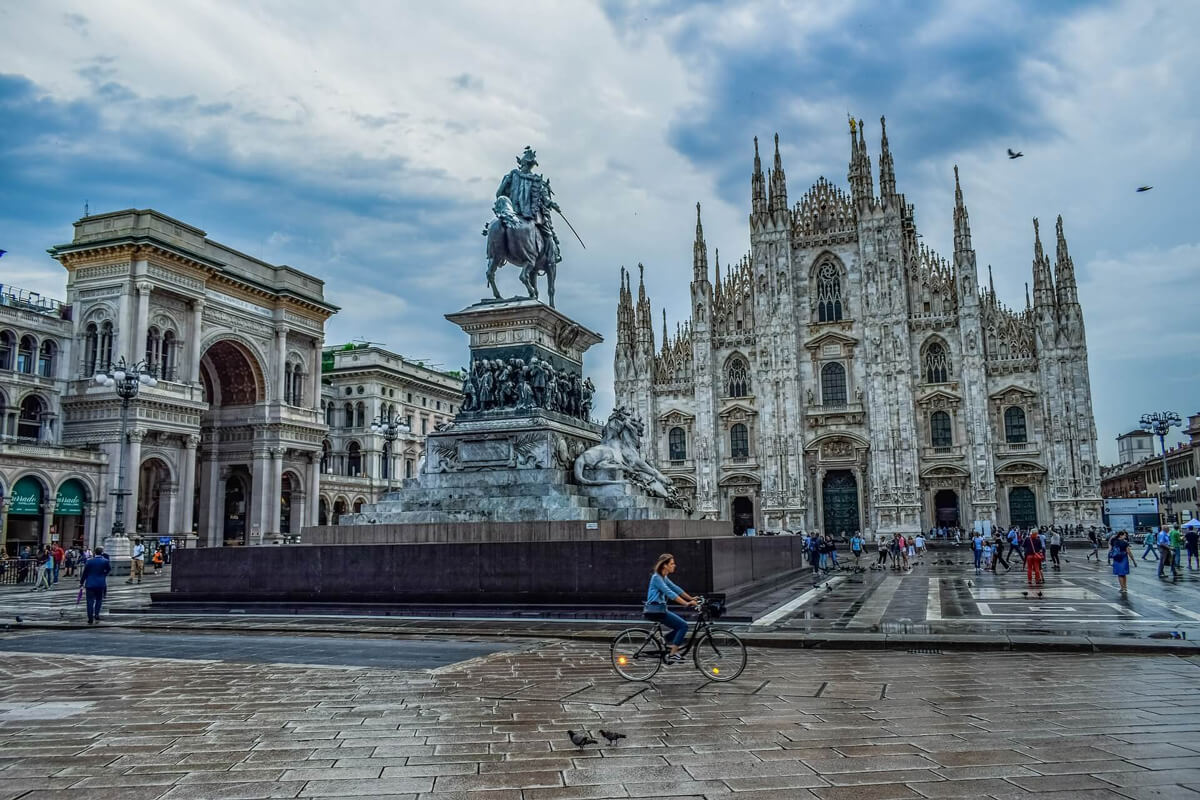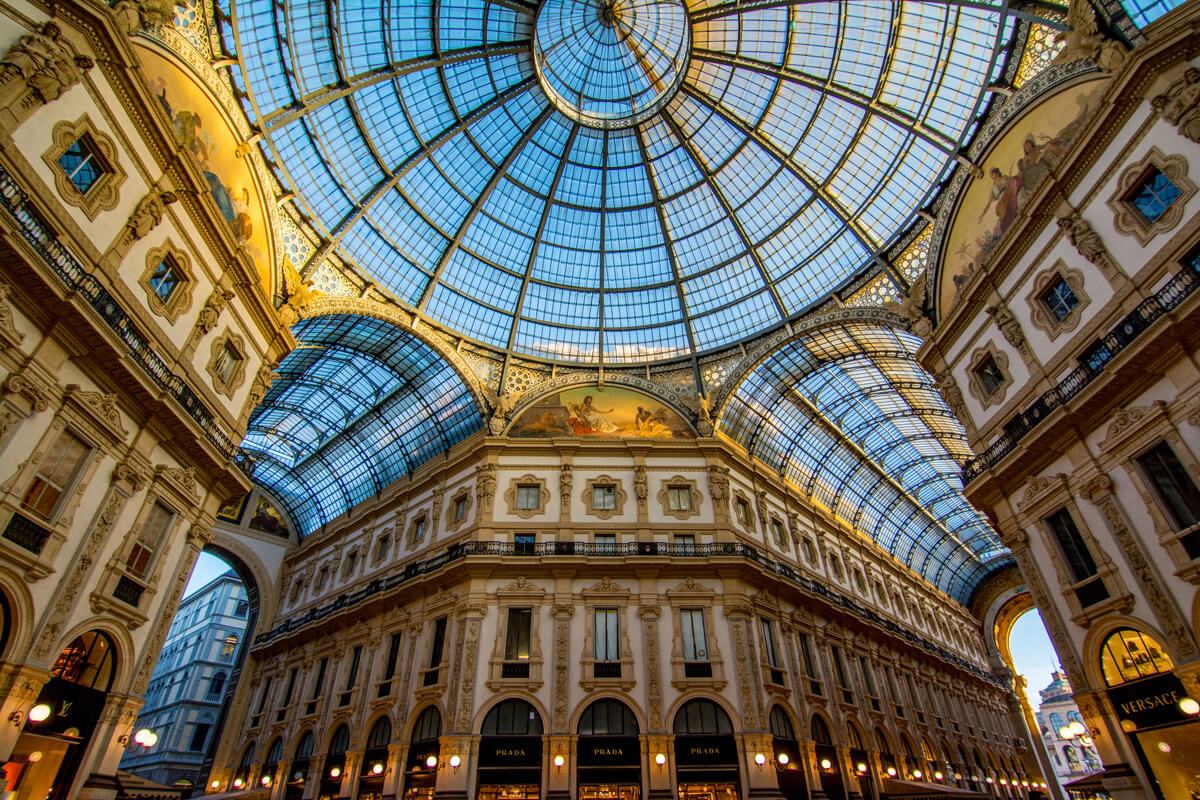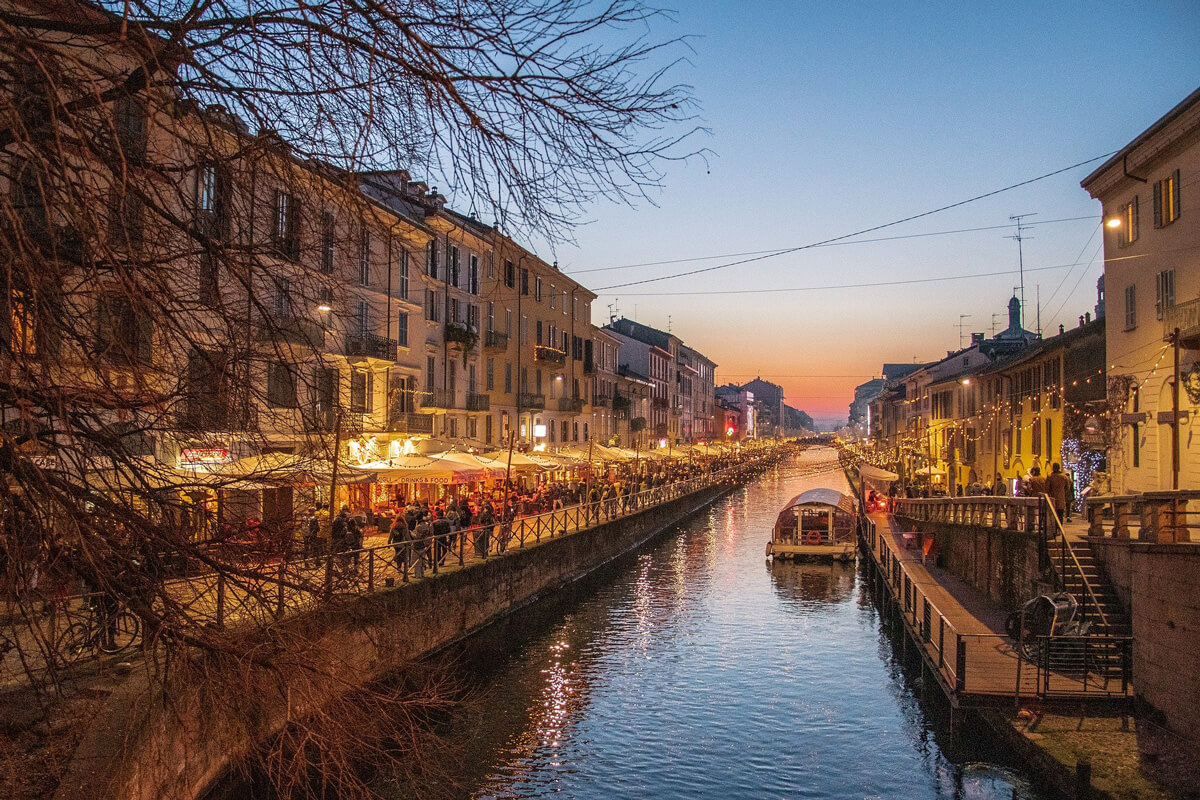
2022 IEEE Nuclear Science Symposium, Medical Imaging Conference and
Room Temperature Semiconductor Detector Conference
05 – 12 November 2022, Milano, Italy

Room Temperature Semiconductor Detector Conference
05 – 12 November 2022, Milano, Italy
With a population of around 1.4 million, Milan is Italy’s second-largest city and the capital of both the Lombardy region and the metropolitan city of Milan. With more than 7.5 million inhabitants, the metropolitan region is the largest Italian urban area.
Today, Milan is Italy’s leading cultural, media and fashion metropolis, university city and an international financial center housing the seat of the Italian Stock Exchange. It is home to a world heritage site, historically significant buildings and diverse art treasures that attract several million tourists a year. Thanks to its convenient location on the Po Valley in northern Italy, the trade fair city is a hub of the rail and highway network and Italy’s second-largest aviation hub, with three international airports.

Milan is located in the north of Italy. The city is easily accessible both by land and by air. It is Italy’s international gateway with three good-sized international airports.
By plane, Milan is reachable via 3 airports:
Milano Malpensa Airport (MXP)
Linate Airport (LIN) (City Airport)
Bergamo Orio al Serio Airport (BGY)
Milan Malpensa Airport (MXP) is Milan’s largest international airport. Malpensa Airport has two terminals which are quite far apart, so we recommend checking which terminal you fly out of because the bus or train to get to each terminal can vary. At the moment Terminal 2, the smallest one. is closed.
A train route connects Terminal 1 to Milan’s centre: the Malpensa Express. It takes 37 minutes to the end of the line and runs every 30 minutes. It will take you to Milano Cadorna. The cost of the one-way ticket is 13 Euros.
There are several bus shuttle company with a permanent bus service that connects the Central Station of Milano or other locations in Milano with Malpensa Airport. The buses depart from Milan to the airport from 4 am to 11 pm. Read more on how you can travel from Malpensa on the Airport website
If you have planned to come to Milan by train, you can easily do so. Milano has main train stations, the main being:
Milano Cadorna Train Station
Milano Centrale
Milano Porta Garibaldi
As an example, traveling from Venice to Milan takes 2 hours. Traveling from Rome to Milan takes 3 hours.
Information – trains in Italy
Information – trains from Europe:
More useful links:
www.italiarail.com/
www.omio.com/trains/italy
www.trenord.it
Traveling by bus in Italy is not very common. It can be a quite confusing experience if you’re visiting for the first time. With several bus and coach companies only operating in certain regions and some only offering airport transfers, it’s important you know how the Italian bus network functions.
Check out a couple of useful links:
Trainline – Busses in Italy
Milan has highway access from all directions, making the city extremely accessible by car. The city’s ring road, divided into the eastern Tangenziale Est and the western Tangenziale Ovest and the outermost eastern Tangenziale Esterna, is the endpoint of a number of main regional highways, including the A4 coming from Turin, Venice and Verona, the A1 connecting Milan and Bologna, Florence and Rome, the A7 coming from Genoa and Liguria, and the A8/A9 that goes to Switzerland and Lakes Como and Maggiore.
Should you need additional info to get to Milano you can
Although Milano hotel prices are not as high as in Rome or Venice, they could be expensive. Nevertheless, if you book in advance you can find extremely good deals in mid-range centrally located hotels. Despite it could sound strange, Milano can be seen as a relatively small city, in particular if you consider locations connected by the underground.
The city centre is located between the following metro stations: Missori, Castello, Montenapoleone and San Babila.
If centrally located hotels are too expensive and you prefer to stay a little further out, make sure it is close to a metro station so that you can easily get to the historic centre, where most of Milan’s landmarks are.
If you book in advance, it is possible to find a double room in a mid-range hotel, located very near Piazza del Duomo for € 100 a night. Otherwise, if you don’t mind using the public transport system, you can find good hotels for approximately € 60-70 per night.
Finding accommodation in Milano is easy and can also be cheap. Here is a LINK, which will help and a list of hotels here. You can also think of booking an apartment through Booking or Airbnb
In the city, as well as the numerous surface lines managed by ATM (Azienda Trasporti Milanese) www.atm.it, the useful underground ( network enables passengers to reach every quarter. Milan is served by 4 underground lines which cross the city from one end to the other with 87 km (54 miles)
of track. Each line is identified by a color: MM1 (red), MM2 (green), MM3 (yellow), MM5 (purple). MM4 is currently under way and will be partly opened at the time of the conference.
The underground (in Italian “Metropolitana”) network map can be downloaded here.
The “Passante” is another part of the Milanese infrastructure. This connects the surface train lines with the underground. It also offers a direct link between Cadorna and Domodossola.
Bicycles are environment friendly and practical when moving in the city. Milano offers cycling fans about 144 kilometers of cycling routes and lanes on a completely flat territory. Adults do not need to wear a helmet. Bike sharing is present with fix pick-up and drop-off points as well as free floating that can be booked via app.
On the different way of moving in Milano, you can read more here
The MiCo Milan Convention Centre is just 2 km (1,2 miles) from the ring road where the national motorways converge and 4 km from Piazza Duomo, the real centre of Milan (a fully round shaped town).
The MiCo Milan Convention Centre is reached by two underground lines:
Radiotaxi companies can be contacted on the following telephone numbers:
Taxi Blu +39.02.4040
Taxi Freccia +39.02.4000
Radio Taxi Milano +39.02.5353 / +39.02.6969
Taxi for disabled people can be booked by calling: +39.02.4040 / +39.02.6969 / +39.02.8585
Delegates and Exhibitors can access through Gate 16 (45.48106156459999, 9.155121812213629) an internal parking space at the Venue ONLY DURING EVENT DAYS. The cost for 1 day is € 15,00 VAT included. Parking service can be paid directly onsite to the MiCo personnel. Parking is on a first-come first-served basis and subject to capacity (180 pax).
This year, unfortunately, we will not offer tours, due to the unstable situation. We hope for your understanding but have listed here a few typical highlights for consideration.
Here is a list for a possible individual sightseeing tour of Milano
One of the rare evidences of the Roman Empire period represent the ancient ruins of the Colonne di San Lorenzo. The colonnades, dating back to the 2nd century, were probably part of a temple or bathhouse. After the Edict of Milan, the first Milanese church of Sant’Ambrogio was built, still exemplary of an early Christian church despite numerous alterations in later centuries.

In the early 13th century, the Palazzo della Ragione was built – a municipal building used for holding court trials, markets, council meetings, etc. Under the duke of the Visconti family, the construction of Milan Cathedral began in 1386. Although the Gothic cathedral of the Archbishopric of Milan was inaugurated in 1572, it was not finally completed until 1965. It is now considered the third largest church in the world in terms of area and an outstanding example of Italian architecture of the late Middle Ages.
In the 15th century, under the rule of the Sforza, the Castello Sforzesco was built as a magnificent example of Renaissance architecture. The great fort was built in place of a ruined castle and was the seat of the Dukes of Milan. The Ospedale Maggiore [9], one of the earliest European hospitals, was built starting in 1456. The building is today the headquarters of the University of Milan. Another outstanding testimony of this era is the Monastery of Santa Maria delle Grazie, recognized as a UNESCO World Heritage Site since 1980.
In 1560 a new city wall was inaugurated, most of whose magnificent gates are still preserved today. The Biblioteca Ambrosiana [10] dates from the period of the Counter-Reformation, and today, with around one million documents and writings, it is an important library of medieval cultural assets.
Under Maria Theresa, the city experienced a renewed cultural flourishing in the 18th century. The inauguration of the Teatro alla Scala in 1778, today one of the world’s most famous opera houses, and the redesign of the Royal Palace took place under the aegis of the Austrian empress. From 1805 to 1814, Milan was subject to Napoleonic rule. As the capital of a French satellite state, the city was structurally upgraded, new representative squares and boulevards were created, and from 1807 to 1838 the Arco della Pace, a monumental triumphal arch, was built.
As part of the industrial revolution in the second half of the 19th century, Milan grew into Italy’s thriving industrial center. Giuseppe Mengoni built the Galleria Vittorio Emanuele II, the oldest covered shopping arcade in the world, from 1865 to 1877. Following the neo-Romanesque style, the Hall of Honor of the Cimitero Monumentale was completed in 1866.
The 20th century saw the development of numerous progressive styles, with architects influenced by Art Nouveau, Art Deco and, especially from the late 1920s, Fascist Monumental architecture. A testimony of this era is the monumental Central Station, completed in 1931.
As part of the industrial revolution in the second half of the 19th century, Milan grew into Italy’s thriving industrial center. Giuseppe Mengoni built the Galleria Vittorio Emanuele II, the oldest covered shopping arcade in the world, from 1865 to 1877. Following the neo-Romanesque style, the Hall of Honor of the Cimitero Monumentale was completed in 1866.

The 20th century saw the development of numerous progressive styles, with architects influenced by Art Nouveau, Art Deco and, especially from the late 1920s, Fascist Monumental architecture. A testimony of this era is the monumental Central Station, completed in 1931.

Striking buildings of the post-war period are mainly skyscrapers, at the same time a sign of Italy’s economic prosperity in the 1950s and 1960s. The Pirelli skyscraper (1956-1960) and Velasca skyscraper (1956-1958) are today considered milestones of Milan’s architecture. A major recent building project is the redevelopment of the old exhibition center in the city center, involving architects Zaha Hadid, Isozaki Arati and Daniel Libeskind. When completed, it will be home to Italy’s tallest skyscraper.
In 2013, the Memoriale della Shoah was opened, a memorial to Milan’s Jews who were murdered by the Nazi regime as part of the Shoah. The memorial is located at the main train station, Stazione Centrale, and includes that underground platform from which the deportations to Auschwitz took place. The entrance is in Piazza Edmond Jacob Safra. There is an entrance fee and the exhibition is currently in Italian only (as of fall 2017). Since January 2017, Cologne-based artist Gunter Demnig has also been laying his Stolpersteine in the capital of Lombardy. They are dedicated to both resistance fighters and people of Jewish origin.
From May 1, 2015 to October 31, 2015, the World Expo 2015 took place in Milan. The pavilions were built on a site located northwest of Milan in the municipalities of Rho and Pero.
Participants coming from EU nations and citizens of USA, Canada, Australia and New Zealand, do not need visas to enter Italy.
Most NON-EU citizens from other countries will need a visa and, sometimes, either a declaration or a permit of stay to formalize their visit in Italy. Please consult the Italian Embassy or Consulate nearest to you for specific details related to visas and visit the Italian Ministry of Foreign Affairs (ministero.affariesteri@cert.esteri.it).
If an entry visa is required, please allow sufficient time for this procedure. To help with your VISA request, a letter can be sent by the Conference Office, as below.
Visa support letters are available upon request. Visa letters will only be issued to:
Please request your visa letter through the conference system which requires a personal login.
If you have not registered yourself previously please create a new account in the conference system. After you have logged in successfully go to “My Profile,” click the tab “Request Visa Letter” and follow the instructions.
Visa letters will be issued based upon your role (presenter, author, exhibitor, attendees, committee members) and the current status of your activities (accepted paper as oral/poster, registered for the conference, or paid fee).
As the congress organizers, the safety and health of all those attending is our main concern and we are monitoring the situation very closely. We are following the recommendations of the World Health Organization as well as those of the local health authorities in Italy. As of today, many restrictions are being relaxed, even if the pandemic is still present.
To ensure the safety of all attendees, information and guidelines will be published closer to the conference.
As of today, you can monitor the Covid19 situation in Milano and in Italy at the following URL
Check out the following URLs for recommendations and advice to organize your travel to Italy and live safely at the conference:
Milan Airport – COVID-19 Latest Updates
and
Italian National Tourist Board – COVID-19 updates
For additional information, please refer to the MICO guidelines and to the Italian Heath Ministry official info: Italian Heath Ministry official info
In order to get the right information to enter Italy please see the online questionnaire from the Internal Affairs Ministry online questionnaire for travelers. On this questionnaire, you have to select the purpose of your travel and your vaccination status. Then you will receive the conditions required for you to enter Italy.
We will continue to advise accordingly and provide related updates on the conference website for the safety of the participants and their families and the industrial exhibitors and participants.